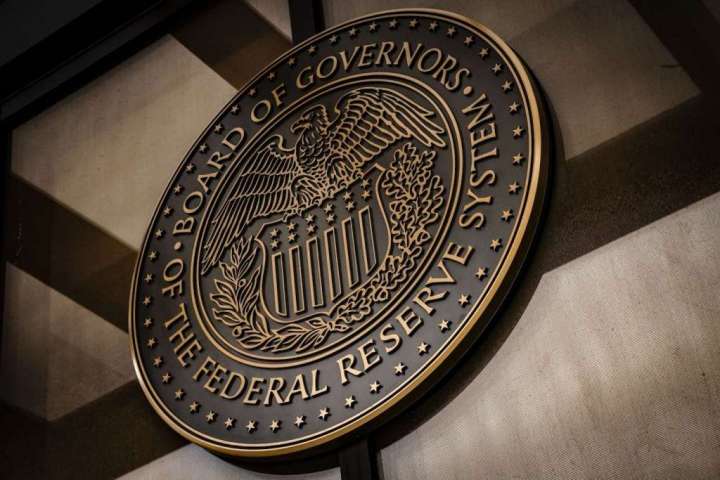Near the peak of the last inflationary era, in 1979, Federal Reserve Chairman Paul A. Volcker provided a lesson in central-bank leadership. Ignoring the Fed’s regular schedule of meetings, he summoned his colleagues to a secret weekend confab, then emerged to inform the world that the Fed had rewritten its playbook. The details of the new policy mattered less than the signal that Volcker sent. Enough is enough, the chairman was saying. He would conquer inflation, and Fed conventions wouldn’t stop him.
Trumpism makes the inflation fight urgent

Volcker faced consumer-price inflation over 12 percent, which is considerably worse than the present challenge. Yet today’s Fed confronts another moment in which aggressive action is the safest path and conventional caution is dangerous. This is not just because the latest consumer-price report was troubling, though it was. It’s because of the risk presented by the next presidential election.
Start with the latest inflation numbers. Consumer prices were up 9.1 percent in June from a year earlier, the highest increase in four decades. Worse, the rise was not confined to volatile items such as food and energy: Everything from cars to clothes to rents climbed upward. The month-to-month measure was even more worrying than the annual one. June prices were fully 1.3 percent higher than May’s.
Ordinarily, the Fed could indulge in a learned debate about what these data imply for the future. The optimists could point out that commodity prices, whose surge last year contributed to inflation, have recently subsided. Likewise, the federal budget deficit has shrunk dramatically, curbing another force driving inflation. Wages are rising less quickly than they did last year, and financial markets have tumbled. Put all this together, and perhaps inflation will come down by itself. Maybe the Fed has the option of not tightening too hard and allowing the economy some oxygen.
But, however plausible the case for optimism, the Fed can’t rule out the danger of another inflation shock. China might resume lockdowns. Ukraine-related embargoes might intensify. An important, commodity-exporting emerging economy could succumb to a Sri Lanka-style breakdown. A more lethal strain of covid-19 or a natural disaster could strike. In 2005, Hurricane Katrina caused a sharp inflation surge by knocking out oil refineries.
With the future so uncertain, the Fed has to judge not just which interest-rate policy is most likely to be right but also which would be most costly if wrong. The answer to the second question is obvious. After a year when inflation has come in higher than expected month after month, the Fed cannot allow it to continue at anything like the present level. The dollar is supposed to act as a unit of account and a store of value. It is the mechanism that coordinates the physical and intellectual labor of millions. If people can’t rely on it, they will lose the appetite to save, invest and plan for the future.
Meanwhile, the election calendar looms ominously. Defeating inflation could be a drawn-out business: It took Volcker from 1979 to 1982 to get inflation down to around 6 percent. Further efforts were required after that: As late as 1989, Volcker’s successor, Alan Greenspan, raised the short-term interest rate to almost 10 percent to keep the lid on prices. If the current inflation is conquered twice as fast, the struggle will still extend beyond the next presidential contest.
For now, the Fed is lucky to be working alongside a supportive executive. President Biden is old enough to remember the 1970s and the cost of letting inflation go unchecked. He prides himself on being an “institutionalist,” and the Fed is among the institutions he respects. Meanwhile, Treasury Secretary Janet L. Yellen is herself a former Fed chair. She probably cares more about the Fed’s ability to carry out its inflation-fighting mission than about her own job.
Historically speaking, this is unusual. U.S. presidents from Truman to Johnson to Nixon to the elder Bush have attacked the central bank whenever inflation reared its head and the Fed tried to quash it. Donald Trump followed in this tradition even though inflation wasn’t much of a problem on his watch: He kept up a barrage of intemperate tweets about the central bank’s decisions. If Trump or a Trumpist wins in 2024, he or she will probably attack the Fed for attacking inflation at the expense of growth and jobs, even though the best thing the Fed can do for the economy is to deliver stable prices. Vacancies on the Fed’s decision-making committee could be filled by hacks with no stomach for the short-term costs of containing inflation.
Because of this political factor, the inflation fight is especially urgent. If the Fed fails to control prices in the next 2½ years, its job might become much harder. Already, the Fed is expected to raise interest rates by about 2 percentage points by year’s end. It should summon the courage to deliver more than half of that expected hike at this month’s policy meeting.






